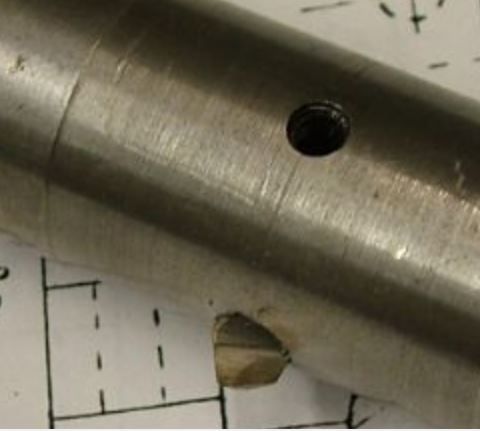Thanks both. Ground another tool, this time with a radius:

But unfortunately it wasn’t great – got chatter and I could hear it was rubbing not cutting. I tried slower speeds to no avail. I reduced the radius slightly, and increased all the angles – not very scientific, but basically made all the edges ‘sharper’. This time it worked. I stuck with 110 rpm. These were the tools I’ve used:

The final cut chips were small curls of material, which looked ok to me:

Surface finish is much better, I might do lapping anyway as per the 10V, mainly because I liked doing it. The bore did break into the feet screw holes, but that was expected.

I measured the bore in several places with the gauge and micrometer:

And with the verniers, both ends the same. It really did measure 1” at both ends. I know verniers aren’t the best for I/Ds, but it’s close enough I think, and I was somewhat startled at the result, so took a picture before it changed!


Now for an issue. I had a small heart attack when I first saw this:

…but there is no ridge at all, confirmed as I said because the bore seems very consistent (almost unbelievably consistent I know). Any idea what this colour difference us? The last cut was continuous, and there was nothing at all to suggest anything changed during the cut. No discernible change in surface finish either.
Cheers!
 JasonB.
JasonB.





























